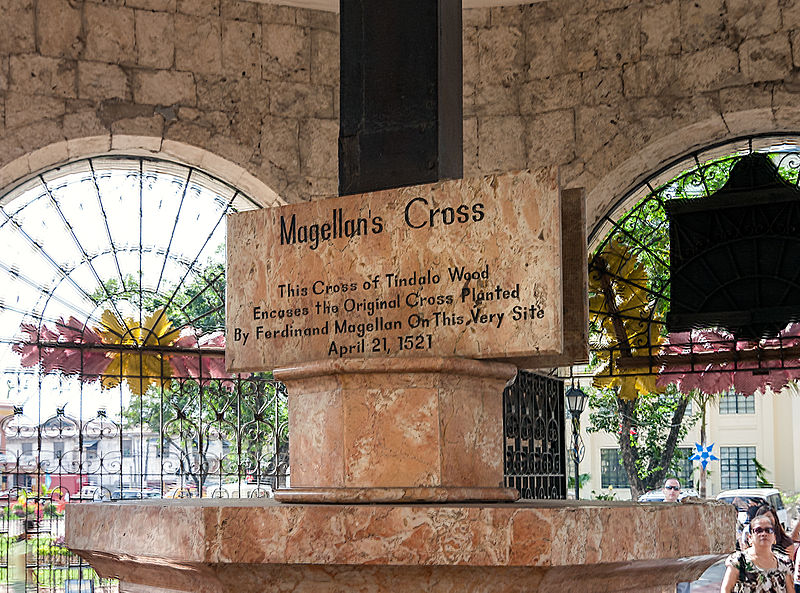Magellan's Cross, Cebu

Facts and practical information
Magellan's Cross stands as an enduring symbol in Cebu City, Philippines, marking a significant moment in the country's rich history. Housed in a chapel next to the Basilica Minore del Santo Niño, this wooden cross is believed to be planted by Portuguese explorer Ferdinand Magellan upon his arrival in 1521, signifying the birth of Christianity in the Philippines.
This historical marker is a must-see for visitors to Cebu, offering a glimpse into the Philippines' colonial past. The cross is encased in a hollow tindalo wood to protect it from damage, as it is said that people chipped away parts of the cross believing it had miraculous powers. Above the cross, a mural depicts Magellan's landing and the first Catholic mass celebrated on the island, adding context to the significance of the site.
Magellan's Cross is a site of pilgrimage for many devout Catholics and a point of cultural interest for tourists. It is conveniently located in the heart of Cebu City, making it easily accessible to visitors. The site is open to the public every day, and there is no admission fee, although donations are accepted. It is particularly busy during Holy Week when many local devotees visit.
Magellan's Cross – popular in the area (distance from the attraction)
Nearby attractions include: Fort San Pedro, Basilica del Santo Niño, Cebu City Sports Center, Malacañang sa Sugbo.
Frequently Asked Questions (FAQ)
Which popular attractions are close to Magellan's Cross?
How to get to Magellan's Cross by public transport?
Ferry
- Cebu Pier 1 • Lines: Cebsug (13 min walk)
- Metro Ferry, Inc. (15 min walk)
Bus
- Librando Bus Terminal (17 min walk)
- Cebu South Bus Terminal (17 min walk)


















